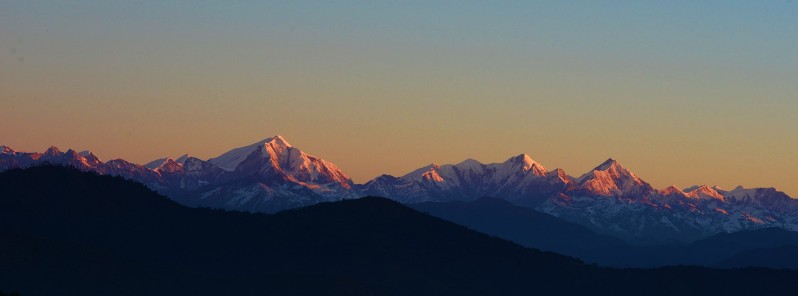Earthquakes in Himalaya bigger because tectonic plates collide faster

Earthquakes that happen in densely populated mountainous regions, such as the Himalaya, spell bigger earthquakes because of a fast tectonic-plate collision, according to a new study in Earth and Planetary Science Letters. Researchers from Geophysical Fluid Dynamics – ETH Zürich in Switzerland, say their findings give people a more complete view of the risk of earthquakes in mountainous regions.
The new study shows that the frequency and magnitude of large earthquakes in the densely populated regions close to mountain chains – such as the Alps, Apennines, Himalaya and Zagros – depend on the collision rate of the smaller tectonic plates.
In 2015, a magnitude 7.8 earthquake struck Gorkha-Nepal, and a year later, Norcia, Italy suffered a magnitude 6.2 earthquake. Previous research has attempted to explain the physical causes of earthquakes like these, but with ambiguous results. For the first time, the new study shows that the rate at which tectonic plates collide controls the magnitude of earthquakes in mountainous regions.
"The impact of large earthquakes in mountain belts is devastating," commented Luca Dal Zilio, lead author of the study from Geophysical Fluid Dynamics – ETH Zürich. "Understanding the physical parameters behind the frequency and magnitude of earthquakes is important to improve the seismic hazard assessment. By combining classical earthquake statistics and newly developed numerical models, our contribution addresses a crucial aspect of the seismic hazard, providing an intuitive physical explanation for a global-scale problem. Our scientific contribution can help the society to develop a more complete view of earthquake hazard in one of the most densely populated seismic zones of the world and ultimately take action accordingly."
There are seven large tectonic plates and several smaller ones in the earth’s lithosphere – its outermost layers. These plates move, sliding and colliding, and that movement causes mountains and volcanoes to form, and earthquakes to happen.
The researchers developed 2D models that simulate the way the tectonic plates move and collide. The seismo-thermo-mechanical (STM) modelling approach utilises long-time scale processes to explain short time scale problems namely replicate the results observed from the historical earthquake catalogues. Also, it shows graphically the distribution of earthquakes by their magnitude and frequency that are caused by movement in the orogeny – a belt of the earth’s crust involved in the formation of mountains.
The simulations suggest that the magnitude and frequency of the earthquakes in mountainous regions are directly related to the rate at which the tectonic plates collide. The researchers say this is because the faster they collide, the cooler the temperatures and the larger the areas that generate earthquakes. This increases the relative number of large earthquakes.
The team confirmed the link by comparing earthquakes recorded in four mountain ranges: the Alps, Apennines and Himalaya and Zagros. Their results imply that the plate collisions in the Alps are more ductile than those in the Himalaya, reducing the hazard of earthquakes.
Provided by Elsevier
Featured image credit: Koshi Koshi

Commenting rules and guidelines
We value the thoughts and opinions of our readers and welcome healthy discussions on our website. In order to maintain a respectful and positive community, we ask that all commenters follow these rules.